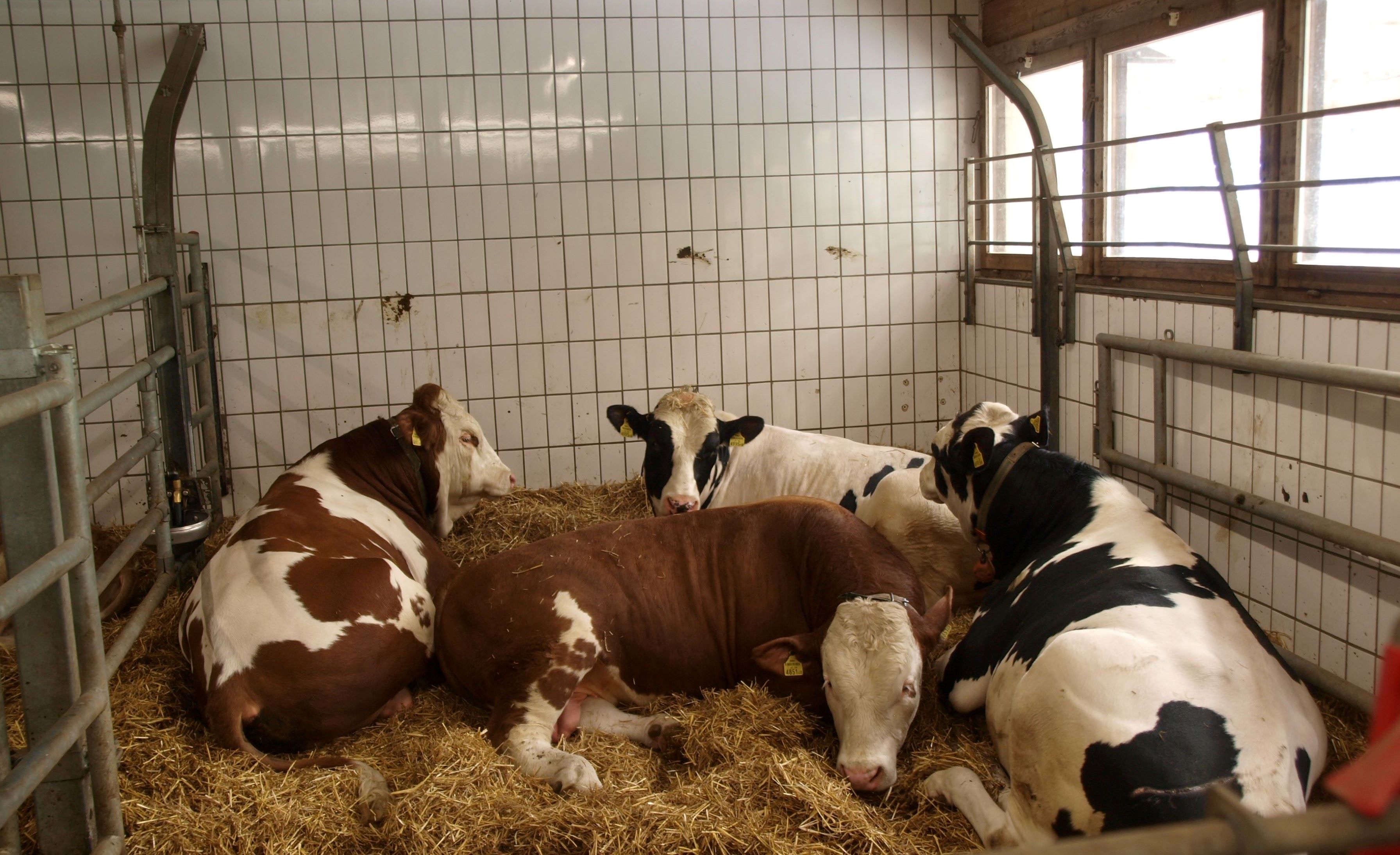Holstein Friesian (HO) is a dairy-focused cattle breed and, at around 6%, is the second most common cattle breed in Austria after Fleckvieh (FV) (75% of all cattle). HO is rarely found in bull fattening, but also in oxen and calf fattening, and if so, then in crossbreeding with meat breeds. This is because dairy breeds gain weight more slowly than the dual-purpose FV breed, the carcasses are less meaty and feed conversion is poorer. There are breeding options to prevent purebred dairy calves and calf fattening also represents a sales channel.
Exports of dairy calves abroad are very common and are often criticized. According to Rinderzucht Austria (2022), around 5% (almost 40,000 pieces) of Austrian calves are exported abroad for fattening. For reasons of animal ethics and social responsibility, a holistic view of milk production AND fattening should be taken.
In a bull fattening trial, 2 different basic feed rations (100% corn silage vs. 1/3 corn silage and 2/3 grass silage) and 2 concentrate levels (20 and 40%, respectively) were fed. The final fattening weights of the bulls were derived from the dairy cow weights and were 720 kg for FV and 660 (Holstein_High Performance (HO_HL) or 600 kg for the HO genotypes).
HO_HL bulls, which is the HO genotype commonly used on our dairy farms, had 200 g lower daily weight gain than FV and carcass culling was 3 percentage points lower. In the fat class they were the same as FV with an average of 2.5 points. However, the 5-part EUROP meat class showed significant differences: All FV bulls achieved meat class U, while HO_HL only achieved meat class O. The proportion of valuable cuts (English and Schlögel) relative to the carcass weight was slightly higher for HO_HL. However, if you only look at the proportion of English (roast roast and Beiried), HO_HL performed significantly worse. HO bulls had a slightly lower feed intake. However, the feed expenditure per kg of weight gain was around 15% higher with HO. The meat quality (intramuscular fat, tenderness, ...) was slightly better with HO than with FV. In particular, the two HO genotypes HO_Life Performance and HO_New Zealand performed significantly better than FV in terms of meat quality.
The ration consisting of 1/3 corn silage (MS) and 2/3 grass silage (GS) resulted in around 80 g lower daily weight gain compared to the 100% MS ration, with higher feed intake and approx. 0.9 months higher age at slaughter. As a result, the GS/MS ration also performed significantly worse in terms of feed input. The type of basic feed had no effect on slaughter performance. Meat from the GS/MS ration had a yellower fat color, lower grill juice losses and higher omega-3 contents.
40 instead of 20% concentrated feed (CF) in the ration significantly increased feed and nutrient intake as well as daily weight gain and the target final fattening weight was reached 50 days earlier. The KF proportion had no effect on the feed expenditure per kg of gain, but it did have an effect on the feed intake per kg of live weight. The KF level significantly influenced kidney fat percentage and back fat thickness, but had no significant effect on any other slaughter performance characteristics. Except for the fatty acids, which were sometimes cheaper with a lower proportion of CF, the CF group had no effect on the internal quality of the meat.
According to the online IDB calculator from the Federal Institute for Agriculture and Mountain Farmers' Issues, HO_HL is not competitive with FV under the current conditions. If HO_HL were fattened to 25 kg higher final fattening weights and there was a 20 cent surcharge per kg slaughter weight for fattening dairy calves domestically, HO_HL would be competitive with FV.






